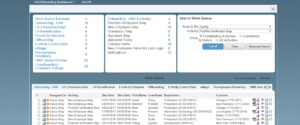SAP has been developing implementation guides, explaining the solutions from a feature and functions perspective, however these documents were lacking the explanation of how to realize a end to end business requirement from a customer stand point.
SAP has been receiving questions from customers and partners regarding these requirements, but nobody wrote down this knowledge in a consistent way. That was point in time SAP decided to find a team to create IDPs. Below please find the answers to the frequently asked questions,
· What are IDPs: IDPs are documents that complement existing implementation handbooks by addressing real-life implementation challenges. They provide guidance from Product Management on how to correctly implement the product in line with today’s capabilities and tomorrow’s roadmap based on proven “best practices”
· How are they created? Produced by the SAP SuccessFactors Product Management CoE and written in collaboration with leading SAP SuccessFactors implementation partners.
· What are the focus areas? Employee Central and its integrations, addressing deployment strategy, solution architecture, and business and technical requirements.
Now, SAP SuccessFactors has more than 18 IDPs and they fall into 3 Categories. Some examples include
Functional
· Employee Central: Manage Pay Scale Based Salary Increase
· Employee Central: Managing Indirect Valuation of Pay Components
· Employee Central: Recognizing Gender Diversity
Strategic
· Migrating EC-ERP Productized Integrations from Boomi to SAP Cloud Platform Integration
· SAP SuccessFactors Suite: Identity & Access Management
· Employee Central Core Hybrid: Data and Process Distribution Strategy
Architecture & Deployment
· SuccessFactors Integrations Tools: Integration Center and SAP Cloud Platform Integration
· Employee Central Side-by-Side: Deployment and Solution Architecture Considerations
· Employee Central: Implementation Considerations for a Phased Roll-Out
Benefits of Implementation Design principles (IDPs):
· Understand the product end-to-end: IDPs provide insights from SAP’s point of view on how particular business requirements should be implemented with the product. This end-to-end view is the basis for a thorough understanding of the product
· Conformity and Uniform Practices: Applying IDPs will result in more conformity and more uniform implementation in line with product direction, leading to time and cost savings, risk reduction, and greater customer and partner satisfaction.
· Industry Proven Practices: IDPs ensure that industry-proven product implementation, best practices are considered, addressing long-term, aspects like scalability and operational efficiency
· Anti-patterns to identify risk: In addition to providing patterns for design and solution architecture, IDPs also provide anti-patterns, that is, flag potential options as not beneficial or even risky. This helps to identify risks in implementations that are already productive.
Finally, IDPs help to avoid misuse of the SAP SuccessFactors solutions. For example, we have seen cases where compensation related objects like recurring pay components are used for calculating project-based performance. Repurposing objects may create unforeseen problems in the downstream systems that integrate with the compensation solution.
Do you have more questions?
Connect & Clarify
Like It? Share It

Shyam Reganti
Shyam is a Solution Engineer at 3Core Systems Inc, focused on helping clients with HR and Digital Transformation



